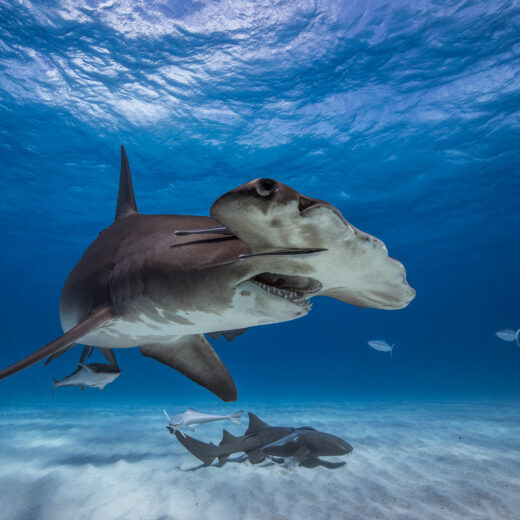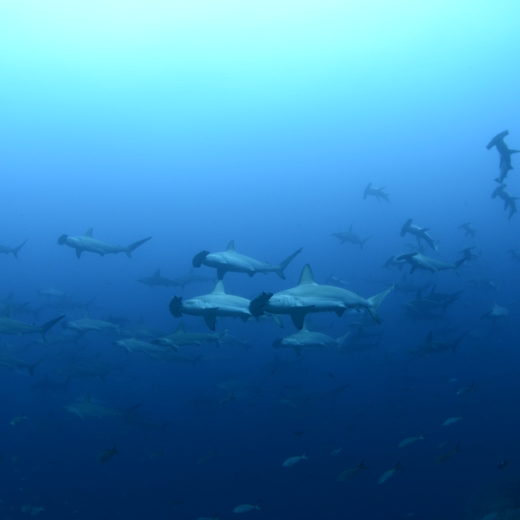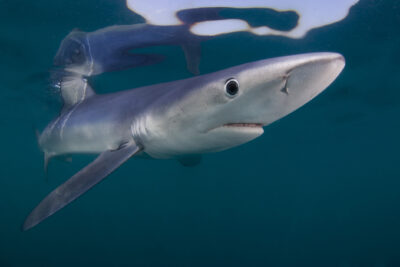
There are more than 500 species of sharks swimming in oceans around the world. From the smallest light-emitting Dwarf Lantern Shark averaging close to 7 inches in length to the 55-foot-long whale shark, sharks have been greatly misunderstood. And now they’re in critical danger.
But why should we care about sharks? Well, they do a lot for us humans and for the oceans we depend on. Plus, they’re fascinating! With so many species, sharks have a wide-array of behaviors and characteristics, though, to be fair, sharks are like other animals—they’re individuals with their own quirks and intrinsic value, regardless of what species they are.
Here are a few facts about the group of animals that can be found along coasts, in estuaries, in the occasional river, and in deep ocean waters, thousands of feet below the surface.
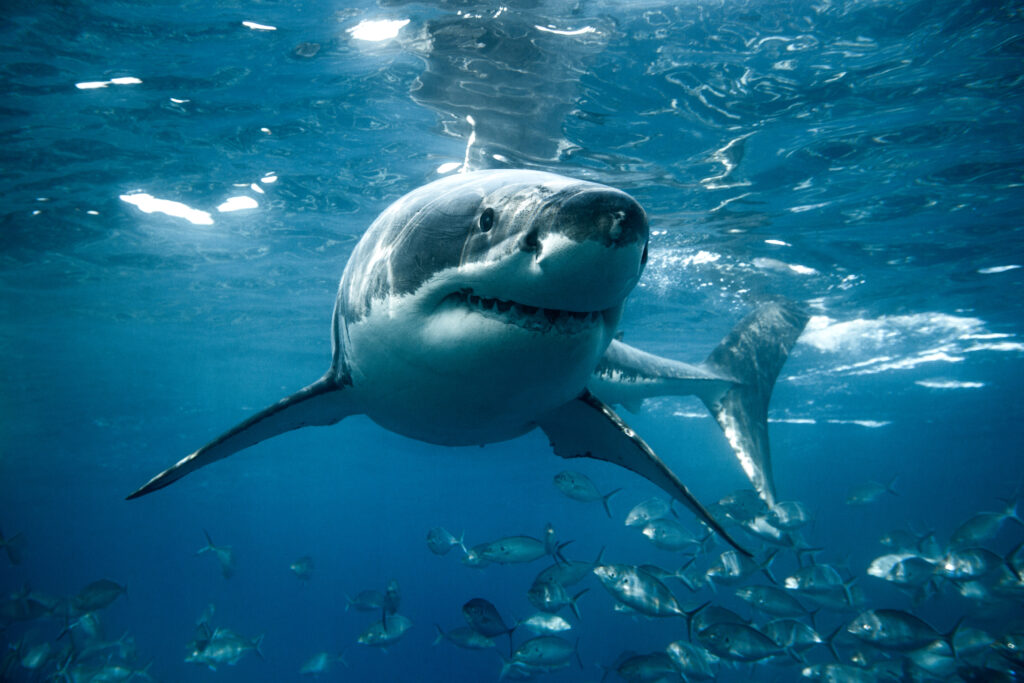

1. What makes a shark a shark?
Sharks are fish whose skeletons are made of cartilage instead of bones, making sharks related to rays, skates, and sawfish. Cartilage is the same material that forms human noses and ears, and it, along with large oil-filled livers, helps sharks stay buoyant. But did you know that shark cartilage fossilizes, unlike human noses and ears? That’s because sharks form calcium deposits in their skeletons as they age, strengthening their skeletons and fossilizing afterward.
Other shark features include their pectoral fins, five to seven gill slits (instead of one like bony fish have), and dermal denticles—the tiny scales that make sharks super fast.
2. How do sharks benefit the environment?
Most sharks are predators, and the large ones are often apex predators, which means they are top-of-the-food chain animals who are necessary for maintaining ecosystem health and balance. Apex predator sharks maintain prey populations and support healthy habitats. They’re particularly important for coral reefs and seagrasses. For example, when there are fewer sharks in a reef system, larger predatory fish, such as grouper, dominate, feeding off of the smaller herbivores. With fewer herbivores, the microalgae can rapidly multiply, killing the corals.
Fewer sharks has led to the decline of reef systems and sea grass habitats. These environmental disruptions have consequences for humans as well. Out-of-balance species impact commercial fisheries and seafood products and affect eco-tourism.
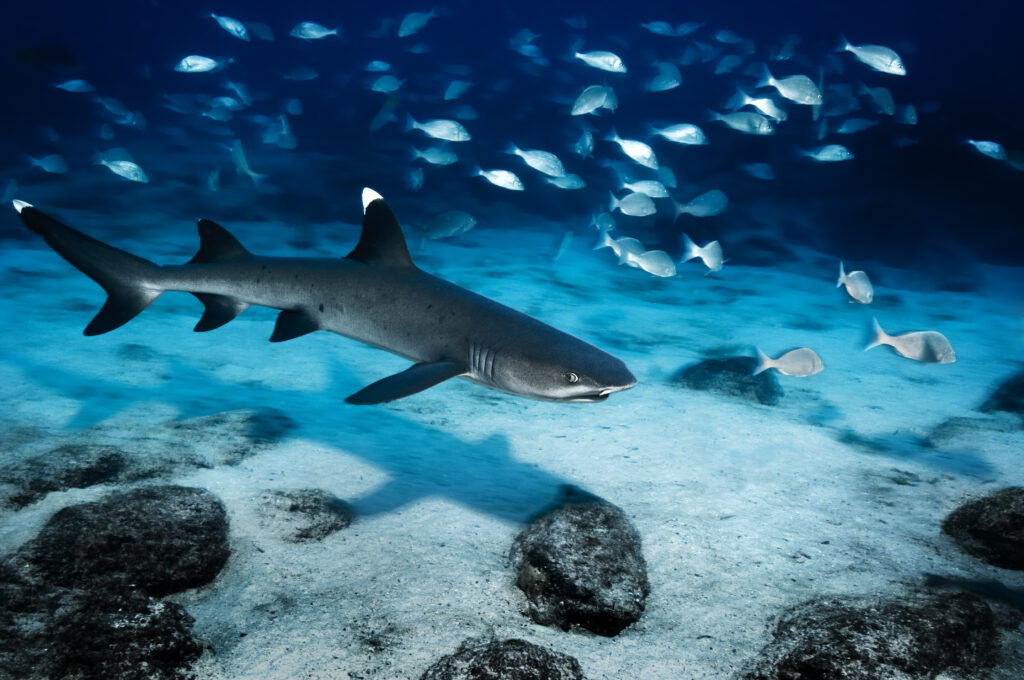

3. What do sharks eat?
It’s true that sharks eat many different animals. Depending on the species, sharks may eat fish, other sharks, squid, marine mammals, crustaceans, and more. Whale sharks eat plankton, while tiger sharks are among the least choosy and have been known to scavenge carrion. Like other predators, though, sharks tend to prey on the sick, weak animals, which helps keep the living prey populations healthy and robust. And the scavengers do their part by keeping the ocean clean!
4. Are sharks intelligent?
Yes, sharks are intelligent animals who are capable of learning. In the 1950s, Dr. Eugenie Clark, known as “the Shark Lady,” discovered that lemon sharks could recognize colors and shapes and learn to perform behaviors. Her training techniques are now used in research facilities and aquariums to help sharks get proper nutrition and food.
Even more interesting and more recent research has shown that sharks are adept social learners who can learn from each other. Scientists in Australia studied juvenile Port Jackson sharks and discovered the young animals were able to learn how to forage for food by observing others. This might not sound like much, but observational learning was previously thought to be the domain of only highly-social animals, such as birds or mammals.
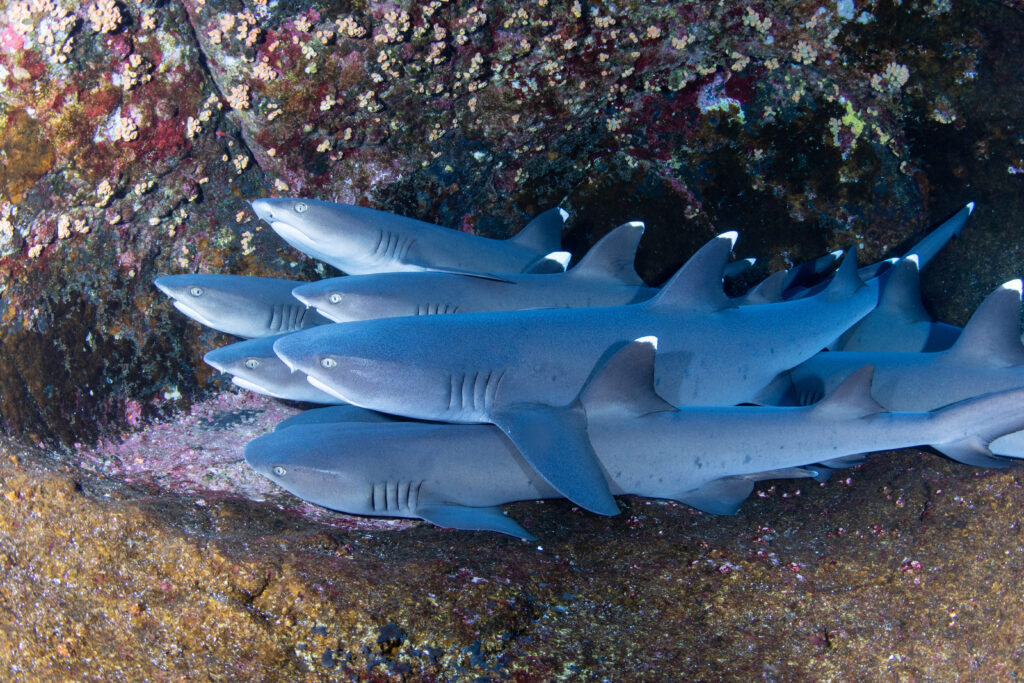

5. Do sharks have friends?
Maybe! Despite their misplaced reputation as killing machines, sharks have been known to form social bonds. Scientists studying two groups of sharks found evidence of socializing sharks beyond the expected yet random interactions with strangers.
According to one study, endangered grey reef sharks form social communities and bonds that can last for years. The scientists noticed the studied sharks chose to return to the same location to meet with their group after a night of foraging. Even when other shark groups were nearby, the sharks showed a preference for their regular circle.
White sharks have also demonstrated social interaction and cooperative hunting. Studied individual sharks were noted to occasionally swim with another shark for over an hour. One particularly social shark had 12 social interactions in less than 48 hours. That particular shark’s tracker was on the least amount of time, yet it had one of the highest numbers of recorded interactions.
6. Do sharks sleep?
Maybe, but this answer has nothing to do with some species needing constant movement to stay alive or their inability to close their eyes. In fact, Dr. Eugenie Clark discovered that not all sharks must continuously swim in order to breathe.
If sharks sleep, it’s different from the kind of sleeping humans do. Some speculate that shark brains can’t regulate sleep cycles and are incompatible with unconscious sleep, suggesting sharks enter periods of restful consciousness. However, others found evidence of sleep in draughtsboard sharks when drops in their metabolic rates were observed during periods of rest, sometimes with their eyes open, sometimes with them closed.
7. What kind of fish gives birth to live pups?
Not all sharks give birth to live young. Some lay eggs that are deposited in a sac known as a mermaid’s purse. The shark fetus is nourished by the yolk and eventually hatches.
Other sharks are viviparous, which means they give birth to live young. Blue, bull, and hammerhead species develop a placental connection that is similar to an umbilical cord. After the shark is born, a scar, kind of like a bellybutton, is visible for a few months before healing.
Among the sharks who give birth to live young, some species may give birth to several hundred pups at once. Others, like the sand tiger shark may give birth to only two. Great white sharks may have anywhere from two to 12 pups born after a one-year gestation period.
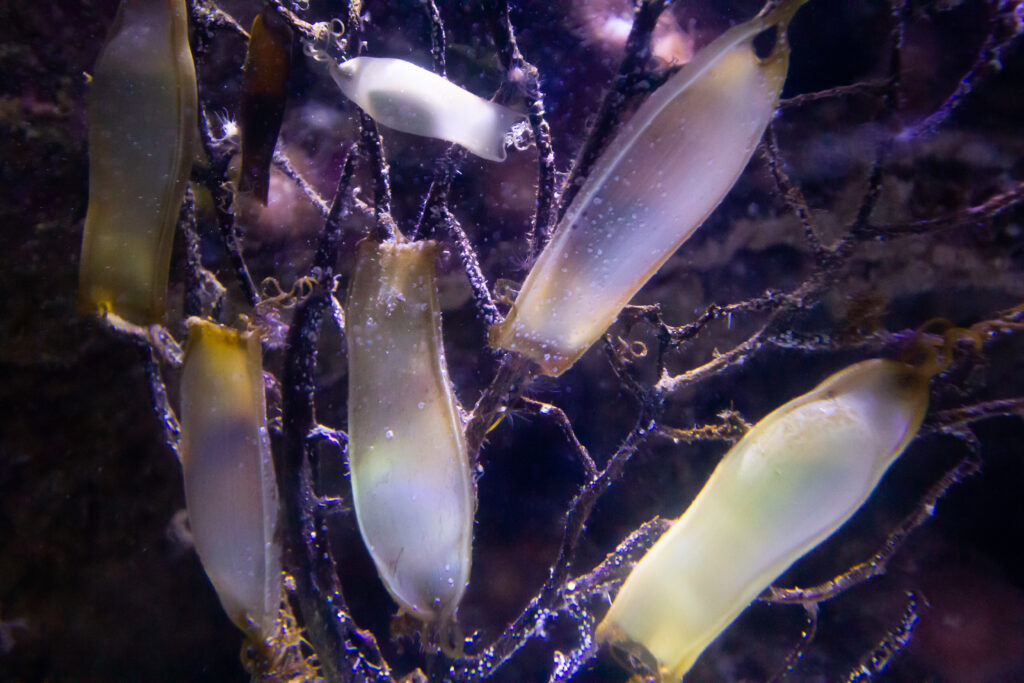

8. Why are sharks endangered?
Sharks are among the most endangered animals on the planet with some populations dropping by 71% in half a century. The main culprit: overfishing.
It’s estimated that 100 million sharks are killed each year for their fins and other body parts including their cartilage, skin, and livers. Many other sharks die as bycatch after being caught in commercial fishing nets or trawls. Even recreational catch-and-release is distressing and damaging to a shark. Not all survive, even after release.
Habitat and ecosystem loss have also negatively impacted sharks. The destruction of mangroves, which many sharks use as nurseries, has affected shark reproduction, while the loss of healthy coral reefs due to pollution and climate change limits food resources for sharks.
Many sharks are particularly vulnerable to extinction because they are slow to sexually mature. For example, male white sharks reach sexual maturity around the age of 26. For female white sharks, it takes even longer. They typically aren’t ready to carry pups until they’re at least 33. When they do give birth, they don’t have exceptionally large litters, either.
For many sharks, more individuals are dying than are being born, and that’s a fast-track to extinction.
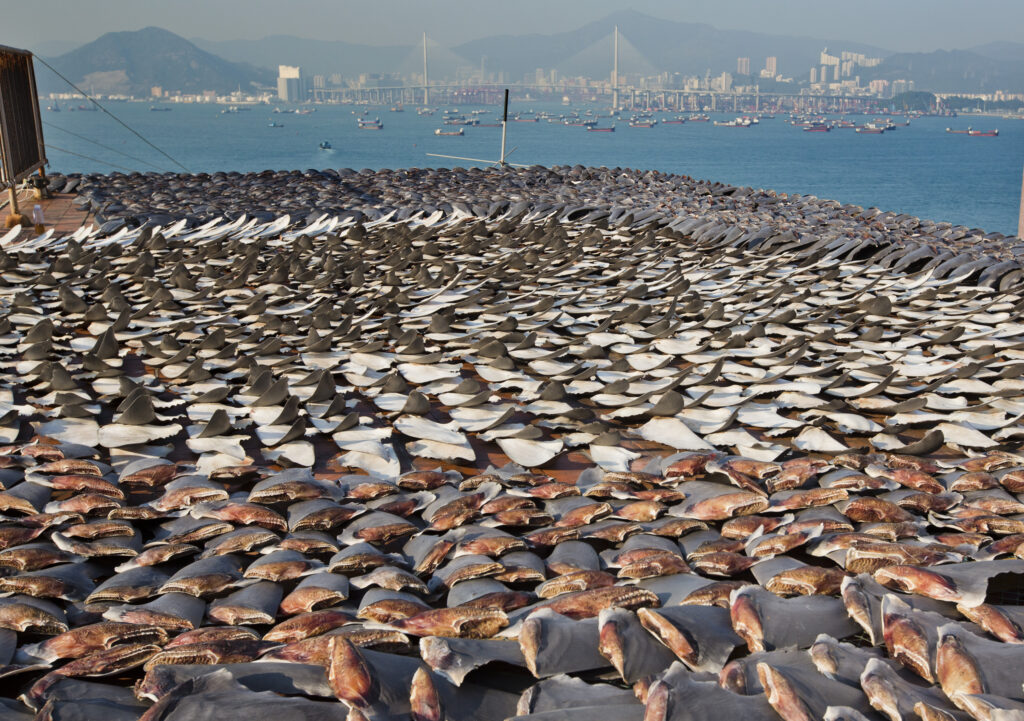

How can you help sharks?
You can help sharks by not purchasing or consuming sharks or shark products. Pay particular attention to cosmetics, which may contain squalene—a compound commonly made from a shark’s liver.
WildAid works in key marine areas around the world to protect vital shark habitats and populations and to reduce the demand for shark products. Support our work here.
You can also make other positive changes that slow climate change and benefit ocean health, allowing sharks and other marine life to thrive. For ideas on the many small yet significant steps you can take, see The Environment Excuse.
Stay in touch and get the latest WildAid updates.
SIGN UP
